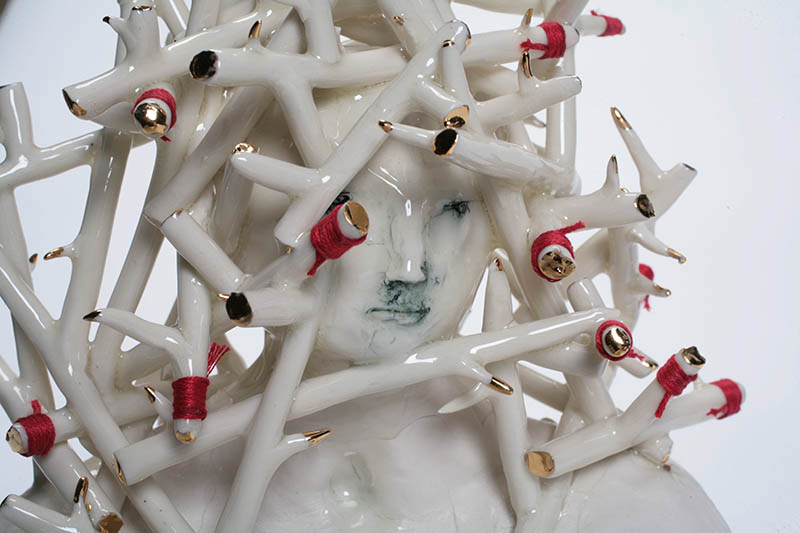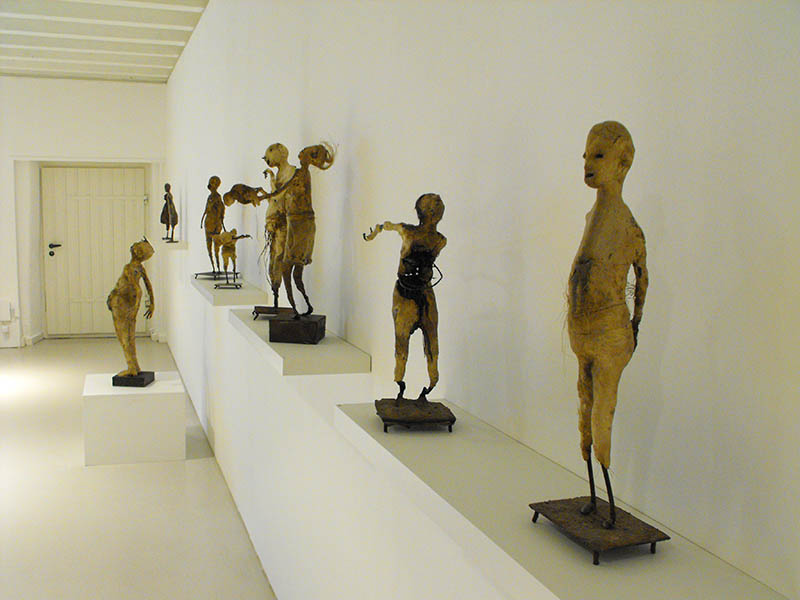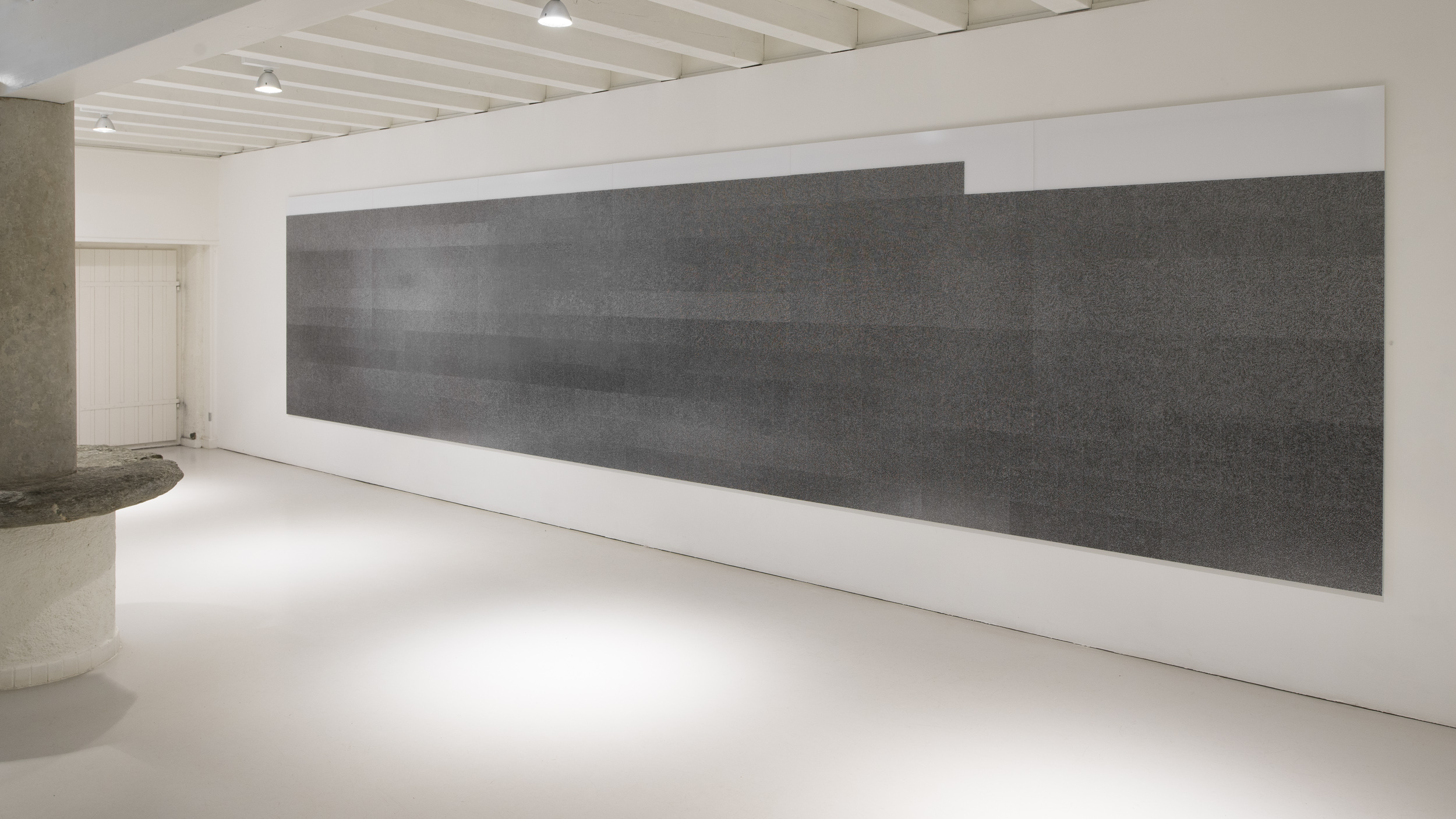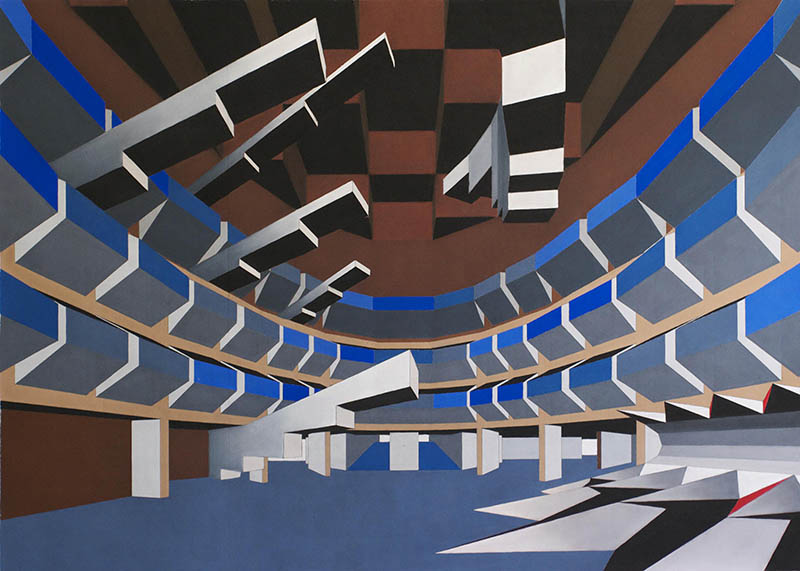
Claire Curneen
Elsa Alayse
Olivier de Sagazan
Elsa Alayse, Claire Curneen, Olivier de Sagazan
The modelled sculptures in clay mixed with straw, metal and other materials of Olivier de Sagazan, send out a silent cry to the fragile, sensitive, transcendental qualities of human nature. Wounded bodies and deformed, pierced or disfigured faces call to our deepest selves, where our link with all humanity resides. Through the gaping and distressing wounds, the artist expresses the fear of suffering and dying, the will to fight for survival and the struggle for dignity which are waged by so many of the world’s people.
Africa and its rituals, still close to sacred traditions and symbols, were part of the artist’s childhood and they remain present. His iconography contains elements borrowed from African masks and statuettes but treated as though they are emerging from the past. Because of the way in which the materials have been treated, the sculptures seem to have come from an archaeological dig.
Olivier de Sagazan uses the same materials for his artworks as for his performance entitled “Transfiguration”. In this, he covers his body with clay to represent the mutations brought about by existence and time. Photographs of his performances, re-worked as paintings, extend the bodily transformations in colour and paint, and are a third component of his work.
Midway between votive offerings and the anatomical models used in medicine, the mischievous figures of Elsa Alayse juggle with games, the workings of the body and the sacred. This artist delves into popular images and anatomical drawings. Small white people emerge, eyes ringed in black, lost in secret thought.
Timeless, close to fable and symbol, they have overlarge heads and sometimes no bodies. They may be placed on flat stands, or they are hanging, or resting on a bottle, like the strange objects in a cabinet of curiosities. The artist seems to hesitate between the sacred and science as though she wants to renew the links which humans have always tried to communicate. When she shows the viscera and the cardio-vascular system, Elsa Alayse portrays physiological mechanics as the result of a miracle and a magic trick, marvelling like an XVIIIth century person might have done. But she also emphasises the sacred aspect through the red of blood, elixir of life, which she also depicts by a thread of purple wool.
Claire Curneen uses unfired porcelain to model large-scale figures which she creates from precisely shaped and assembled fragments leaving scars on the surface. The impression of fragility is underlined by the body’s posture: the head down, the eyes barely sketched. They seem anxious, hesitating between two worlds. In spite of accurate anatomy and proportions, the supernatural is always present. It is represented by painted butterflies or porcelain flowers invading a face, by branches imprisoning a head and by the use of gold as a rich symbol of blood. Her work therefore continues the ancient iconographic tradition in which gold symbolised divinity and eternity. Gilded blood flows from the wounds of St Sebastian who has been a figure in the artist’s work for a long time. From the martyr’s arrows the artist naturally moves to mythology and the myth of Daphne and Apollo, from the wound caused by the weapon to the gradual union between it and the body. Again, nature penetrates the corporeal in a sacred act whereby suffering is sublimated.




